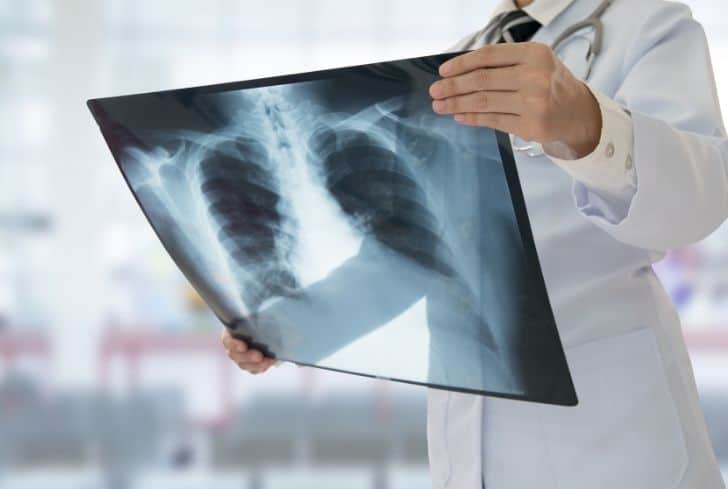Relax, what might be going through your mind when you first saw the word “x-rays” might be some series of medical tests and examinations. Well, that’s not the focus today. What we want to consider today is how x-rays have been helpful and how, probably, their use may be causing some problems for the environment.
X-rays are so useful that many people have never thought that the time would come when the issue of recycling x-rays would be the subject of an online post. Well, what can we say? Consciousness about the environment is rising, and everything humans have ever come in contact with would be examined through the eco-friendliness lens.
For this post, the time has come to examine whether x-rays can be recycled or not and look at many other environmental concerns that arise through the use of x-rays. You don’t want to miss out on the valuable information contained in the paragraphs below. So, sit back and enjoy the details.
Can You Recycle X-Rays?
Yes, you can recycle x-rays. This may sound like the least expected thing on your list, but it is possible to recycle x-rays. How is this so, though? Let’s explain further.
X-ray films are often made of plastic and silver materials. These materials are very much believed to be recyclable. For instance, the plastics used to make x-rays are strong enough to be recycled and used to create new plastic materials. Also, x-rays contain silver materials, which are highly valued and worth recycling.
Besides, recycling x-rays would ensure more prudent use of the materials they are made of. We all know the danger that plastic materials pose to the environment. Reducing this danger means that we should get as much plastic out of the environment as we can, and one of the best ways of doing this is by recycling.
The same thing goes for silver materials used for x-rays. Extracting silver is an extremely difficult task and poses a lot of health and environmental issues. So, it is better to recycle as much available silver material. This way, you are not just saving the environment; you are also saving people from the health risk they may face due to the persistent extraction of silver for x-rays.
But then, because your x-ray films contain private information about you, you may want to know how these materials are dealt with. Well, though the process is simple and straightforward, one thing that can be guaranteed is that your x-ray scans are not treated with carelessness.
Companies that recycle x-rays like Nexcut Shredding first shred your x-ray documents, thereby destroying the information they might contain before they are even recycled.
Many recycling companies turn the x-rays to HIPAA standards for the recycling process, which automatically destroys the information on the x-ray scans. After this, x-ray scans are dipped in a chemical solution. These chemical solutions help separate the silver on the x-ray scan film from the plastic materials.
The silver solution that has been separated is then melted and made into silver bars. These silver bars are often sold to vendors by the recycling company. Because of this, if you have a large number of x-ray scan films, you may be entitled to some money made from the sale of the silver bars extracted from the x-ray films.
After the silver has been extracted, the recycling stations are left with the plastic materials, which are then recycled to make different other materials.
In all, your x-ray film results are recyclable. The good thing is that recycling them can fetch you some money when the silver content in them has been extracted and sold to vendors. So, the next time you come across some x-ray scan results, don’t fret; you can always recycle them and even make some money out of that activity.
Are X-Rays Hazardous Waste?
Going by the definition of hazardous waste being waste that poses a potential or substantial threat to public health, we can categorize x-rays as hazardous waste. You may be wondering why do x-rays have to warrant this classification. Well, we will get to that just now.
X-rays are classified as hazardous waste because of their constituents and their potential to cause threats to humans. Averagely, x-rays contain silver materials. These silver materials can cause sickness or even kill you if you ingest them in large quantities. It can damage your kidney, skin, eyes, and lungs. People could enter a coma or die if there is extreme overexposure to the silver used for x-rays.
Aside from these, the processes of x-rays produce some hazardous materials to our environment. For instance, the analog process of taking x-rays produce some kind of waste like
- X-ray fixer, which has been classified as hazardous due to its constituent of a large number of silvers
- X-ray developer, which contains hydroquinone which is considered toxic
- X-ray film, which contains silver materials classified as also dangerous judging by the amount contained in the film
- Lead apron & dental foil, which contains a considerable number of lead materials considered hazardous.
Considering these materials and the substantial threats they pose to the environment, one can boldly classify x-ray as hazardous waste.
In light of this classification, a new responsibility has arisen regarding how to treat x-rays and their disposal. Generally, medical practitioners have advised that x-rays should be destroyed to protect the privacy of the patients. One of the best ways to ensure you treat your x-rays well is to offer them up for recycling. This way, you are also helping the environment.
Are X-Rays Radioactive?
For x-rays to be radioactive, it means that the x-rays are emitting ionizing particles or radiation. Technically, this means that the x-rays possess enough energy to remove an electron from a molecule or an atom. But then, based on the available scientific facts, can we say that x-rays are radioactive? Well, let’s consider some facts.
Generally, x-rays are radioactive, but the kind of radiation they produce is naturally occurring. This, however, does not mean that they are not dangerous. Despite being naturally occurring, they are classified as carcinogenic, which means that they are capable of causing cancer after constant exposure to humans.
Due to being radioactive, there are some other risks associated with x-rays. X-ray radiations are believed to cause DNA mutations which may give room to cancers later on in life. Research has shown that CT Scans cause about 0.4 percent of the cases of cancers in America.
Also, the exposure of humans to constant x-ray radiation can have many side effects on them. Some of the side effects include hair loss, vomiting, bleeding, and fainting.
Despite all these risks posed by x-rays and their radiation, it is still widely believed that their benefits far outweigh any risk they may be posing to humans or the environment. It is believed that the radiations present in x-rays are ridiculously low that they are incapable of causing any immediate problems to humans.
In all, x-rays may pose some bit of risks here and there, but this does not mean that they should be discarded. They are still relevant and very much useful to diagnosing some internal issues in humans and animals. What should rather be advocated is the observance of preventive and safety measures during the use or process of x-rays.
Can You Put X-Rays In The Bin?
Throwing x-rays in the bin may not be considered the best option judging by different standards. First, x-rays are made of plastic and silver materials which are highly considered recyclable. In fact, by recycling x-ray scan films, you can make some money when the silvers on the x-rays are extracted and sold.
Also, x-rays contain private information about people’s conditions, which, by all standards, must be treated with absolute privacy. Throwing them in the bin is not a way to protect the privacy of people. The best option is to subject them to a process that will destroy the information contained in the x-ray. And that process is through recycling.
Aside from this, x-rays should not be thrown in the bin because of the materials the x-rays are made with. Like we mentioned above, x-rays have plastic and silver materials in them. When you throw them in the bin, the place they end up is in the landfill.
Here, the plastic materials used in making the x-rays would take up to a thousand years before they biodegrade. This translates to more problems for the environment. Even when the plastic materials are seen to biodegrade, they only break down into microplastics which remain in the soil for a long period, thereby reducing soil nutrients and stunting plants’ growth.
Considering all the above implications, we can say that dropping your x-rays into the bin is not a good idea. If you are confused about how to dispose of them, you should pay careful attention to the next segment. There, we will walk you through how to dispose of your x-rays.
How Do You Dispose Of Old X-Rays?
Yes, we also know that your x-ray scan films are what you hold dear to yourself and may not want the prying eyes of others to see. This is why we believe that if you must dispose of them, you have to do this the right way. But then, how do you properly dispose of your x-rays?
So far, the best way that you can adapt in disposing of your old x-ray scan films is to send them for recycling. This way, your x-ray scans are destroyed, and the materials are used to make a new thing. You have seen above how silver is extracted from your x-ray scans, made into bars, and sold for money, so we don’t need to brush over it again. By recycling your x-ray scan films, you are not just disposing of them; you are also helping the environment become more sustainable.
Also, because x-rays are considered hazardous waste, you can dispose of them by calling on the appropriate hazardous waste management authority. The authorities know how to deal properly with it and dispose of it in a way that doesn’t cause any major problem to the environment.
While giving out your x-ray scans to the appropriate hazardous waste management authority, you may have to package it neatly so that it doesn’t expose the x-ray scans and it is easily identifiable.
The way to go about this is to gather your x-ray scans and put them in a plastic or paper bag. After this, you should staple or tape the bag’s opening, and you may label it for easy identification. This way, you are safely disposing of your x-rays.
Conclusion
In the medical field, there is probably nothing anyone can say to discourage the use of x-rays, and, rightly so, this is true. However, this does not mean that if they are not properly managed, they can’t cause problems for the environment.
This is why all measures must be taken to ensure that x-rays are not another environmental problem source. So far, recycling seems to be one of the best options, which we encourage. Please, recycle your x-rays to keep the environment sustainable.
Sources






